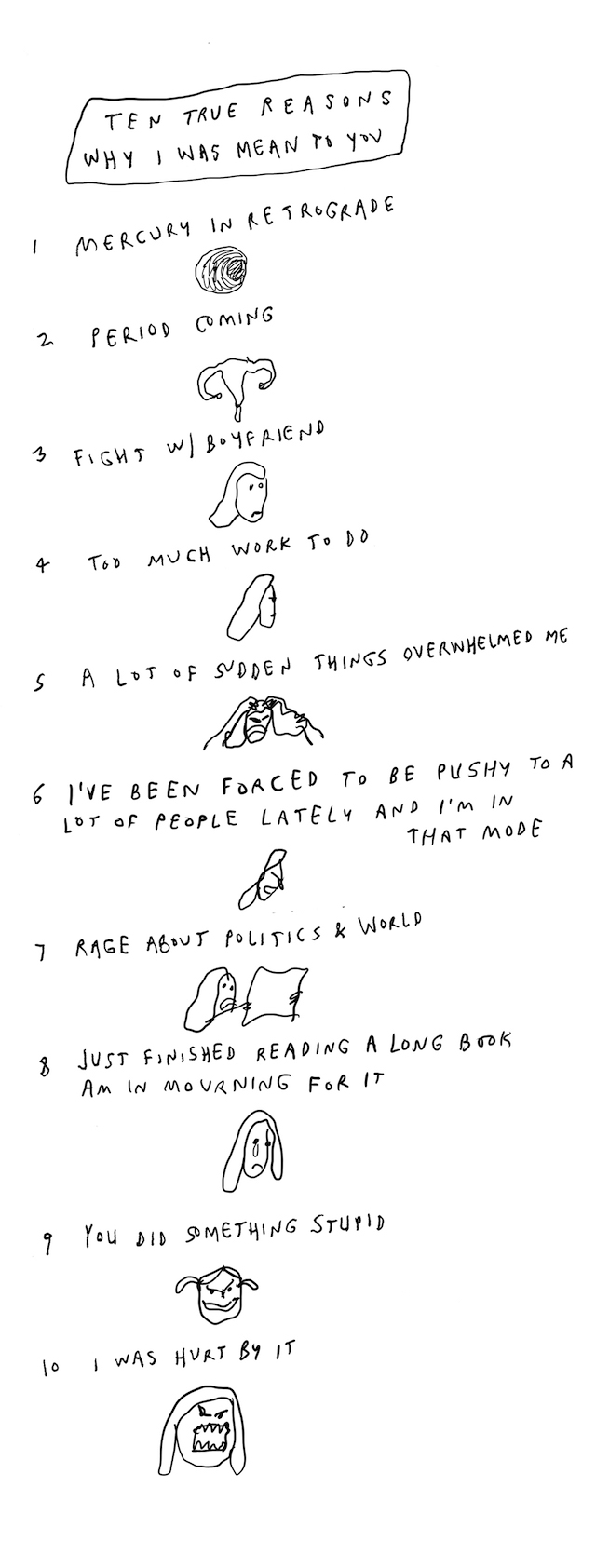Curious Objects At Auction
Lot 1: Bleached for Blanche

Courtesy of Sotheby’s
This hairpiece was always meant to look “untidy, unkempt, poor and tatty,” to reflect the character of Blanche DuBois, a Southern belle in rapid decline, as played by Vivien Leigh in the classic 1951 film, A Streetcar Named Desire. Most importantly, though, it had to be blonde. Like Scarlett O’Hara in Gone With the Wind, whom she also famously portrayed, Leigh was a bold brunette.
The screen-worn wig with sewn-in label was made in London c. 1950 and comes to auction within the highly publicized Vivien Leigh Collection at Sotheby’s in London. The auctioneer estimates that it will bring about $500-750, which seems low considering the potential for a TCM fetish party. It is slated for sale on September 26 alongside loads of books, art, Hollywood memorabilia, and even one of Leigh’s homes, Manor Farm House in Wiltshire, England.
Leigh won the Oscar for best actress starring opposite Marlon Brando, who did not win best actor, his notorious belting of “Hey Stella!” notwithstanding.
Albrecht La'Brooy, "Memories"
Well, here we are. It happened and now it’s over. Probably best not to think about too much. Try not to be so stupid next time is about all the advice I have, not that you’ll follow it. Anyway, here’s music, enjoy. [Via]
New York City, August 30, 2017
 ★★★★★ The sun shone as if it had never been interrupted. The crosswalk stripes seemed to float above the asphalt. Honeylocust branches made a low ceiling over the sidewalk. Everything was dappled and gleaming. The air conditioning was barbarous and best avoided. No haze separated near buildings from far ones, only the precise mathematics of perspective, as the eyes measured their distinct and certain edges against one another.
★★★★★ The sun shone as if it had never been interrupted. The crosswalk stripes seemed to float above the asphalt. Honeylocust branches made a low ceiling over the sidewalk. Everything was dappled and gleaming. The air conditioning was barbarous and best avoided. No haze separated near buildings from far ones, only the precise mathematics of perspective, as the eyes measured their distinct and certain edges against one another.
The Semiotics of the Taco


Tacos have their roots as a Mexican food but are now a fixture in the American diet. They are among the top five foods ordered at U.S. restaurants, according to NPD Group, which says that taco servings were up 2% for the year ending in June 2017. Their influence has crossed into other restaurant cuisines, such as Korean, Chinese and Middle Eastern fare.
Well I’ll be goddamned if the taco isn’t my own personal bubble tea. A whole article in the Wall Street Journal about the taco-as-emblem and not a single mention of how the food trend is widely represented by an emoji or some other crude symbol that is canonically COMPLETELY different from what it represents in the real world. I know, I know, semiotics and what not, but how come no one talks about the utter whitewashing of the taco? The taco of symbology (thank you Dan Brown) is yellow corn, hard-shelled, topped with lettuce, and contains 88% lean ground beef seasoned with Old El Paso seasoning mix. What the hell is that all about? Is this about Taco Bell? That is the joke taco that El Cortez lists on their menu as “All-American Taco Night,” and yes, I have eaten it and it is good*. Everyone knows what a real taco—the kind of taco Kate Spade customers just LIVE for and “Celebrities such as singer Katy Perry and model Chrissy Teigen have recently been photographed waiting in line for”—looks like: a blob of stewed meat topped with cilantro and onions, plopped atop a floppy pressed, steamed blob of white corn. so please stop lying. It’s me, the taco truther, signing off.
*don’t try me
Image: T. Tseng via Flickr
Between Night and J'ouvert

Image: Michael Dougherty via Flickr
The arc of the moral universe is long, but it bends toward schadenfreude. How else to explain the karmic perfection of a solar eclipse captivating us in the summer of 2017, a season when we’ve shown a feeble ability to know darkness from light? I think of Baltimore and Austin, moving under cover of night to remove Confederate statues. And of New York, forcing J’ouvert, the pre-dawn celebration that sets the rhythm for Crown Heights’ West Indian American Day, well past the ability to deliver on its translation. The word means “daybreak,” a detail the event’s new start time, six in the morning rather than four, blithely obscures. According to the New York Times, metal-detecting checkpoints designed to ferret out troublemakers are being imported from the city’s handling of New Year’s Eve in Times Square, an event pointedly allowed to remain oriented toward midnight. “The biggest thing for us is sunlight,” a mayoral task-force member told the paper, of the changes to J’ouvert. “We believe that light is a big deterrent.”
Both these scheduling feints are intended to stem violence: Nocturnal statue excision, in avoidance of Charlottesville-style clashes; J’ouvert’s move, thwarting a small contingent who bring guns or knives, looking to settle disputes. And both departures from the norm can be interpreted as disrupting a tradition. Baltimore Mayor Catherine Pugh was quoted in the New York Times as saying she felt the city’s Confederate-era statues should be removed “quickly and quietly,” not so much ripping off a Band-Aid as a scab. Also from the Times report: The quickness and the quietness of the removal was such that City Council President Bernard Young did not learn of it until he woke up the morning after. Young “missed a late-night phone call from the mayor because he had taken cold medicine for bronchitis and was asleep.” Each generation gets the consciousness-altering substances it deserves.
Cormac McCarthy On the Unconscious Is The Coda To His Career

“The Kekulé Problem” by Cormac McCarthy in the April issue of Nautilus is the author’s first foray into non-fiction, and it’s utterly bonkers.
Never one for pumping out content for the sake of it—the last thing he published was 2006’s The Road, unless you count the screenplay for Ridley Scott’s 2013 movie The Counselor—McCarthy sets his sights on tackling, or at least knocking around, one of the universe’s bigger mysteries: Where does language come from?
According to an introduction by David Krakauer, President and William H. Miller Professor of Complex Studies at the Santa Fe Institute, McCarthy has been kicking around the halls of the SFI for two decades, examining the “puzzles and paradoxes” of language and the unconscious mind. The 3,000-word essay is the result.
Looking back on his career, you can tell he’s been obsessed with these concepts, if only because of what his novels have continually left out. McCarthy’s always been stingy when it comes to insights into the minds of his characters. A free flow between external description and internal thought is one of the tools most often used by authors—it is, perhaps, one of the reasons that fiction exists—yet McCarthy rarely does. (In this way, it makes sense McCarthy has dabbled in screenwriting: His style is similar to films without voiceover narration, while his long sentences—like, that 245-word “legion of horribles” description in Blood Meridian—work like unbroken camera shots in the reader’s mind.)
Why German Kids Love the First Day of School

Photo: Wikimedia Commons user Alter Fritz
In the United States, the first day of school is not a single occasion so much as a confounding, staggered trickle of days whose timing is dependent on individual school districts’ seemingly nonsensical schedules. The result is a steady onslaught of backpacked-and-grimacing kid shots on my Facebook feed from mid-July to damn near October. And while this hallowed moment, whenever the hell it might occur, is essentially a national day of jubilation for destroyed parents everywhere, for American kids it means the advent of nine months of standardized test prep and clique-formation. So we can forgive them for being less than thrilled.
Meanwhile, in Germany, the kids can’t wait for the first day of school. They dream of the first day of school. They long for it! Is this simply because the German love of order and rule-following begins at birth, and life outside of formal schooling simply contains insufficient yelling for the Teutonic soul? Probably, but also, on the first day of the first grade (or the erste Klasse, “first class,” pronounced AIR-stuh KLOSS-uh), kiddies in the Federal Republic happen to get a metric fuck-ton of candy.
Specifically, each German first-grader gets a special first-day-of-school present called a Schultüte (SHOOL-tuuut-uh), or “school cone,” a contraption that is often almost as big as the kid carrying it, and stuffed to the gills with Haribo products, check-ruled notebooks and the cutest damn pens you’ve ever seen. The kids tolerate the school supplies, but they live for the candy.
Alex Cameron, "Runnin' Outta Luck"
Have you noticed how this week is moving along much more quickly than the previous one did? Faster, somehow, than you even imagined possible four days ago? It’s no accident: Time is deliberately hurtling you toward the end of your summer because it has decided that you haven’t suffered enough so far this year, even though your suffering has been immense. Expect the days to accelerate way on into Tuesday, at which point the gears will grind to a halt and regular service will resume, with each hour lasting its now-customary day and each day taking a year. Even though you wasted your summer that doesn’t mean you want to see the end of it… which is exactly why it’s going by so quickly now that you are in its final hours. Anyway, here’s another one from the forthcoming Alex Cameron record. Enjoy.
New York City, August 29, 2017
 ★ The jeans came down off the shelf where they’d been for months. It was necessary to open the blinds to their widest to get enough cloudy daylight to tell which shirt was the black one and which was navy blue. The evening rain in the forecast became afternoon rain in the forecast, then early afternoon rain, its arrival jumping hours earlier each time. Drops were falling before noon. The rain pattered down without drama or spectacle, enough for a rain jacket but not for waterproof shoes. There would be no opera on the big screen at Lincoln Center. A brilliant lilac glow marked the sunset, but new clouds and new rain settled over the night.
★ The jeans came down off the shelf where they’d been for months. It was necessary to open the blinds to their widest to get enough cloudy daylight to tell which shirt was the black one and which was navy blue. The evening rain in the forecast became afternoon rain in the forecast, then early afternoon rain, its arrival jumping hours earlier each time. Drops were falling before noon. The rain pattered down without drama or spectacle, enough for a rain jacket but not for waterproof shoes. There would be no opera on the big screen at Lincoln Center. A brilliant lilac glow marked the sunset, but new clouds and new rain settled over the night.

